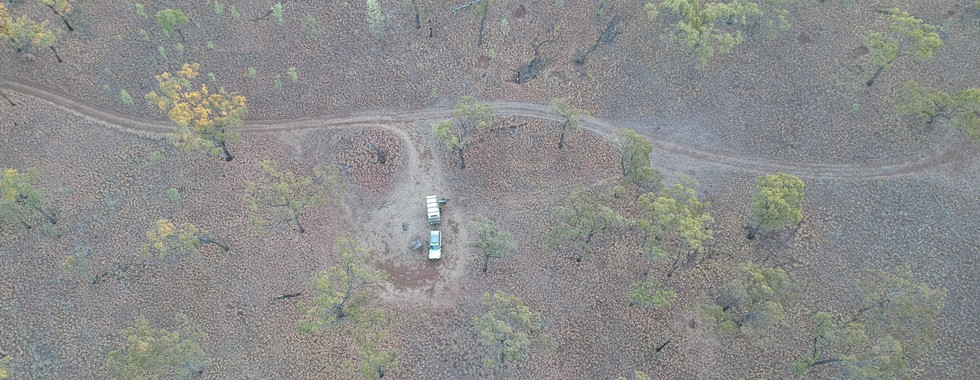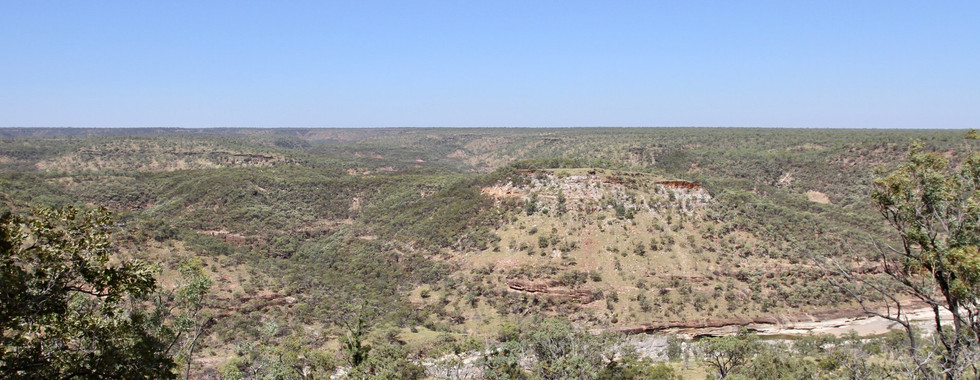KENNEDY DEVELOPMENTAL RD ... inland Qld
- Woolgoolgaoffroad
- Jun 10, 2020
- 6 min read
Updated: Mar 30, 2022
We’ve often headed straight to a destination and missed out on a whole lot but this trip up the Kennedy Developmental Road in western Queensland was a real eye opener. The whole KDR between Winton and Minnamoolka is a stunning area with vast history, stunning gorges, remote camps and some even rate it as mini cape road.

Heading out from Winton it’s a solid 220km run on the blacktop until the historical and colourful town of Hughenden. Wind the clock back to 1861 and it was Fred Walker that camped near the river heading north searching for the lost Burke and Wills party. Just opposite the Flinders River a huge Coolabah Tree was blazed by Walker in 1861 and the following year by explorer Landsborough as they searched in vain. Due to his camp over, Hughenden ( or Mokana as it was named by the local Yirandhali people ) was soon to become pastoral land with huge sheep stations covering the area. The town has had a chequered past where pre 1900 barracks were set up for Aboriginal police so they could track down runaways in the harsh and often hospitable outback. Over the next few years the town grew through land sales, shops were established, a school was set up along with a court house and churches. Strangely enough Americans stored ammo underground just out of town and during a ‘controlled burn-off ’ the fire got out hand causing explosions leaving huge craters, blowing windows out of buildings and burning shops down. Later on grand plans were passed in 1945 to build a two story court house but after it was discovered that the foundations would not support the building and shortage of cement, it was soon only built as one level.

These days the town survives on agriculture and the tourist trade either passing through or stopping by to visit the dinosaur centre. Back in 1963 huge bones were discovered and it turned out to be a 8 metre Muttaburrasaurus that roamed the area some 100 million years ago. Hughenden is part of Queensland’s dinosaur trail where the town has embraced this by setting up a fossil centre with all types of rocks, bones and interactive displays.

Along the KDR there are POI signs that although they only give you a short warning to stop some of them are pretty too cool to pull over and check out. Just before Porcupine NP turn off keep an eye for Bottle Tree hill, where for miles either side of this hill there are no Bottle Trees at all. A track to the top will give you un-relentless views across the plains and other ranges in the distance. At the base of the hill an info sign beside a pile of rocks suggests that here a mailman was attacked back in 1886 by a group of hostile locals who fatally speared him to death.

Surrounding Hughenden are 4 National Parks, but the most spectacular ones is Porcupine Gorge an hour north along the Kennedy Developmental Road. It’s all tar for the 70 km but along the way but it’s a pretty drive as you pass hills covered with Sandalwood trees along the base of Mount Beckford with under-covering Mitchell grass. Porcupine Gorge is accessible to any vehicle where there are ample camping areas and facilities, with the main attraction being the stunning Porcupine Gorge where visitors can hike into the valley below.

There’s only one camping area and you need to book online ( limited reception here so it can be a pain ) to snare your spot as this area does get extremely busy during the cooler months as we found that it was packed to the brim. The area had volcanic activity millions of years ago leaving hard Basalt layers over the soft sandstone and with weathering from rain, fast flowing floods and severe winds it has left what we see today, deep cut gorges with a multitude of coloured layering rock. This place is a haven for birds ( and birdwatchers ) who flock here for the cool water deep in the gorge and with hikers who are prepared to spend hours following the trails into the gorge. It’s a great stopover but heading further north along the KDR is certainly an amazing adventure where not far from the parks entrance the tar soon ends and gives way to some pretty harsh outback unsealed roads.

Coming back out to the KDR and heading north again there’s another info sign that states back in 1888 a chap called Bill Crossley was trying to un-bog his wagon out of the creek, when a Scorpion bit him on his hand. Apparently the nearest town doctor would not come out and help Bill until a deposit was made, by the time Bill’s offsider raised enough cash and they found Bill by the creek he had passed away. Today a rock cairn marks this unfortunate accident.

Further along another info sign alerts you to a Whistling Bore that was sunk to apparently 500 feet deep and no water was to be found and on some days a noise can be heard rising from the capped off bore. We think we heard the hum but true or not it’s not a bad place to stretch the legs. The KDR gets narrow in some places yet some of the way it was a wide as a 4 lane freeway, and the only problem that we occurred were other travellers just going too fast in the opposite direction and not slowing down to minimise dust and rocks. Along the way some 100km up there are a couple of free camping sites just near Moonstone Hill and if you like us we had a fossicking permit so it is ok to look for a few gems. The gems found here at Moonstone are a weird looking clear piece of rock, think of some broken windscreen glass as small as a nail head up to a spoon size piece and only found on this side of the Montgomery Range. The views from the top are stunning as you look around with 360 degree open views across the plains and often you’ll see other travellers or cattle trucks leaving plumes of dust off the KDR rising above the trees.

Just up the road is Blackbrae’s National Park where you can camp and explore, with a 21km road in and out it’s a good base to set up for a few days and explore Emu Swamp Dam that when full of water is alive with birdlife. The dam is an ancient volcanic crater and the surrounding area is the typical Gulf lowlands with black soil plains covered with Silver leafed Iron bark trees. The Gilbert Range heads north from here providing runoff into the lake and surrounding areas.

After leaving this area the KDR follows Elinasleigh Creek for miles and considering just how much of the surrounding area was dry there was water flowing in some of the creeks, and with this it was magic to see a few Bustard birds prancing beside the road. The local shire council is upgrading the road from Lyndhurst Station for around 20km and listening to them on the UHF they were frantically trying to upgrade the road before this years wet season and along the way we found there were already sections up to 5km long that were already sealed. There are some large properties out this way and with that there are some large trucks hauling cattle around, mostly they were towing just two trailers but these guys demand respect and need the whole road. The last 50km from Lyndhurst to The Lynd road house was in pretty good condition so making up time safely was the order of the day. Dont expect to do any breakneck speed out here, generally our speedo was sitting around the 40-60kph most of the way due to the rocky and sandy base and lower tyre pressures.

After two days on the KDR it was a pleasure hitting the tar near the Lynd Roadhouse, where basic supplies can be topped up and the last 95 km up to Minnamoolka is a dream drive. If you have time its possible to explore the Undara lava tubes for a price and the end of the Kennedy Developmental Road. While not a hard or technical drive this 350 km road is an interesting one for the seasoned traveller. Theres no phone service out here even on top of the Ranges, and relying on other travellers may be an issue if you breakdown. At the end of the KDR there are several options that include keep heading north towards the Atherton Tablelands or further west towards Normanton along the Gulf Development Road.

















Comments